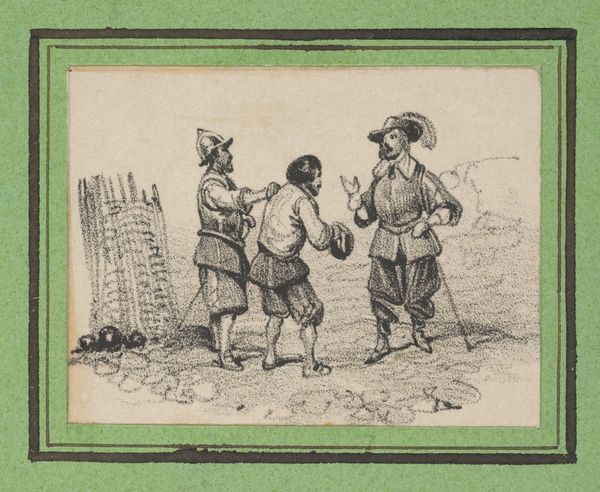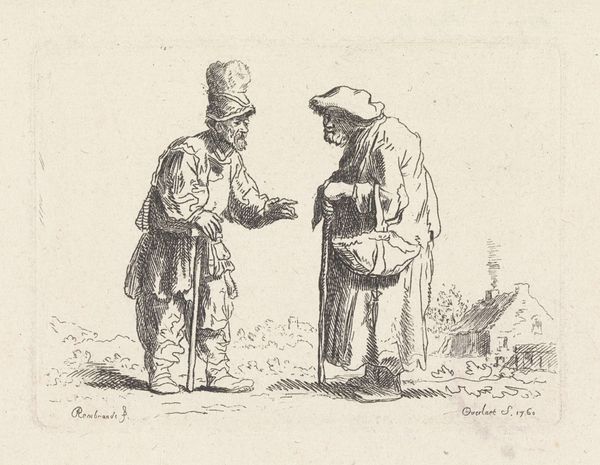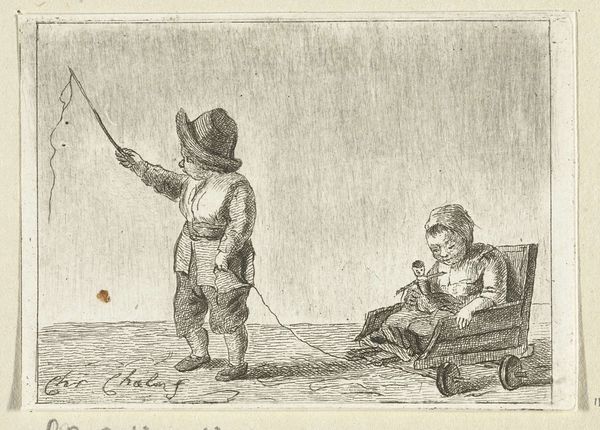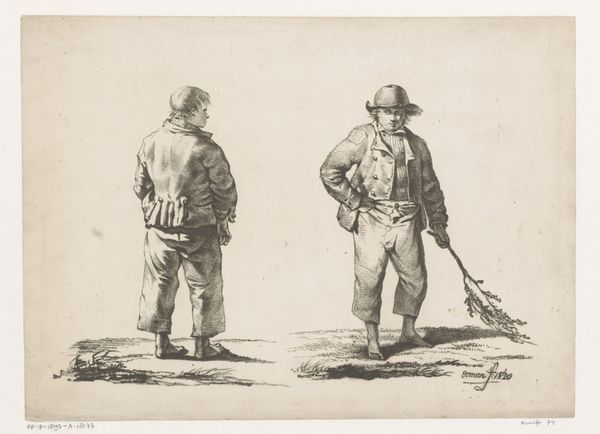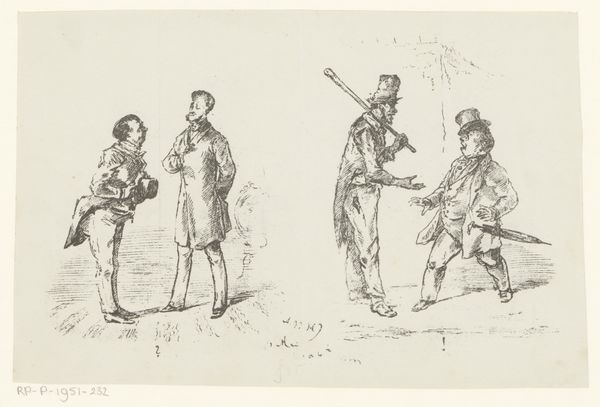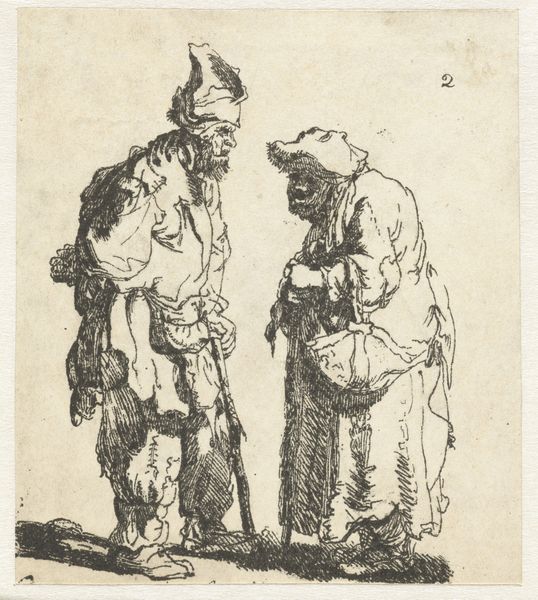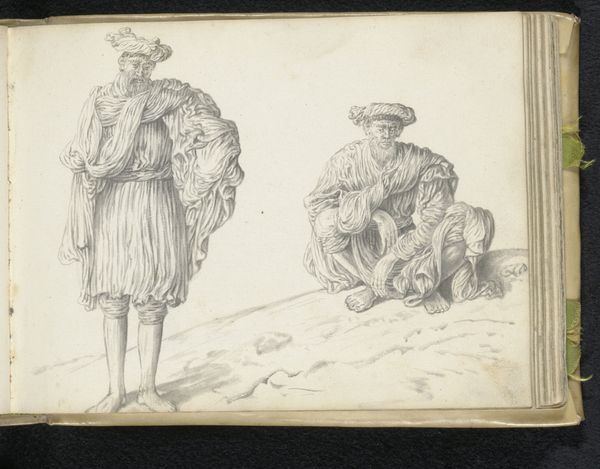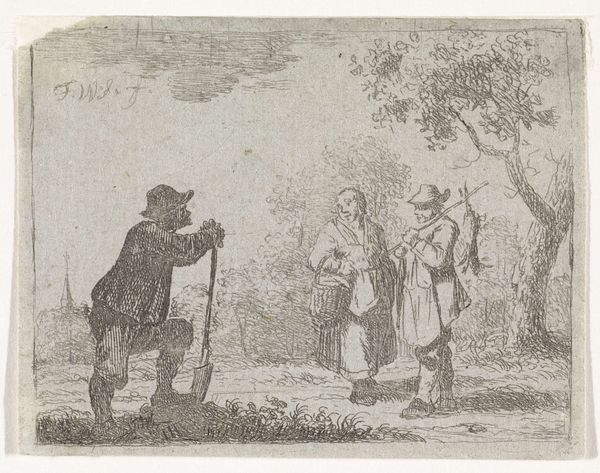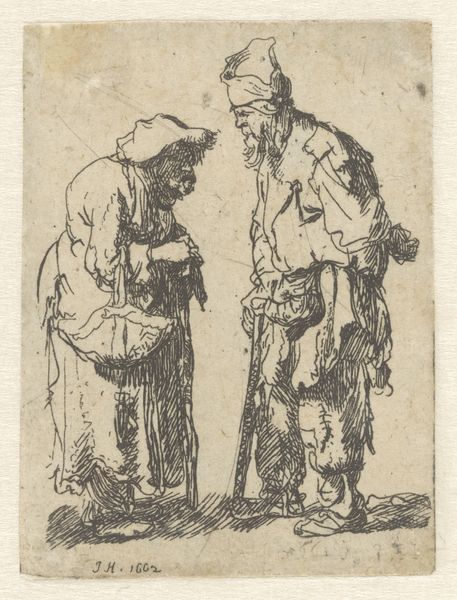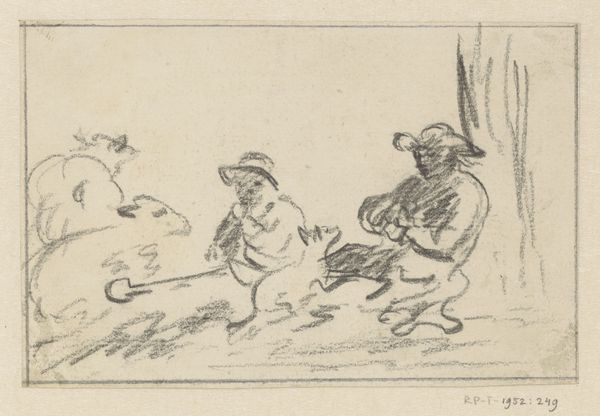
drawing, pencil
#
portrait
#
drawing
#
narrative-art
#
romanticism
#
pencil
#
genre-painting
Dimensions: 13 7/8 × 18 3/8 in. (35.2 × 46.7 cm)
Copyright: Public Domain
Curator: Looking at "The Meeting" from around the 1830s by Philippe Auguste Jeanron, made with pencil on paper, the first thing I notice is how stark and dreamlike it appears. A real encounter in the countryside, but veiled by a strange stillness. Editor: It evokes a sense of hushed secrecy. There's a vulnerability in the exposure of this meeting; their stances speak volumes, don’t they? The man leaning on his staff almost guarded, and the other, arms crossed, appearing stalwart. It's narrative art at its most intimate, prompting the viewers to be witness. What do you see symbolically? Curator: Indeed. It strikes me that their garments—a hat and cape for one, a sombrero-like disc for the other—tell stories. The man with the staff is burdened, while the other seems shielded, almost entrenched. This visual dichotomy is deeply encoded in the iconography of their time, marking distinct societal positions that would have been very familiar. Editor: Right. Their very postures are cultural inscriptions. The Romantic period leaned heavily into portraying man against the vast, somewhat indifferent backdrop of nature, using these interactions to hint at larger societal conflicts and personal introspections. Note the almost stark contrast between the sketchy lines of their form and the textured background elements, like the tree. Jeanron highlights figures at a turning point. Curator: That interplay with nature is classic Romanticism, and Jeanron does seem aware. There is a sense of displacement within the larger landscape. And in choosing genre painting, a slice of daily life, as his theme, we glean societal attitudes toward class, movement, and interactions, but the encoding suggests both a shared belonging and the unsaid things that may be driving conflict or change in that society. Editor: A fascinating intersection of Romantic ideals and emerging class consciousness. It becomes more than just a snapshot of two men in a field. This image asks us to ponder social identities, perceived burdens, and resilience against changing socio-economic tides. The tree behind him could symbolize his deep entrenchment. Curator: Definitely a painting filled with psychological tension. Its simplicity and apparent transparency mask its cultural depth. This moment invites us to speculate about its deeper story, which may represent resilience in the face of cultural turbulence. Editor: Right, it seems we both see these symbols rooted in how power and displacement are often physically represented, especially when those in vulnerable positions seek allies or support.
Comments
minneapolisinstituteofart almost 2 years ago
⋮
Philippe Auguste Jeanron was a forerunner of the French realist movement. By the 1830s, he had begun depicting the kind of rural interactions we see in The Meeting. Here two men engage in serious conversation. The man on the left wears a smock and a broad-brimmed hat typical of the Limousin region, in south-central France. Resting slightly against a long staff, he looks toward the other man with concern. This second figure stands erect, arms crossed, face impassive. One suspects that the man on the left has troubles, perhaps an inability to pay rent, and the man on the right cannot or will not help.
Join the conversation
Join millions of artists and users on Artera today and experience the ultimate creative platform.
